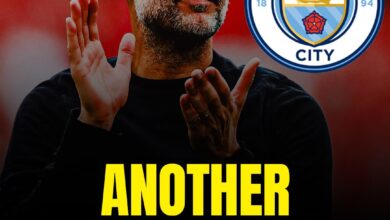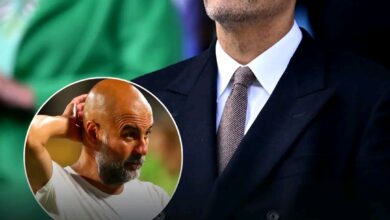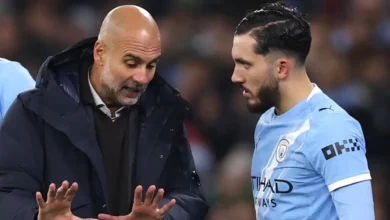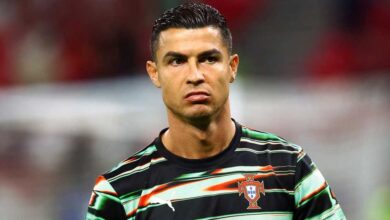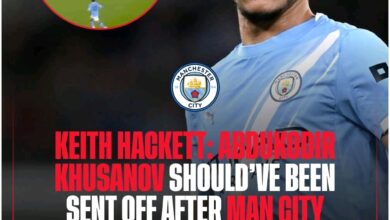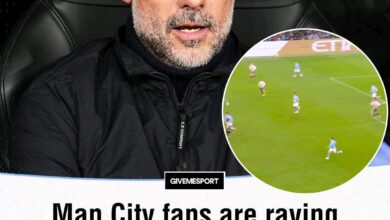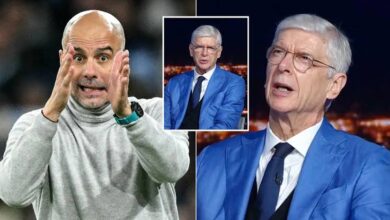Arsenal transfer news – Major Viktor Gyokeres update, 5-year contract done, Rodrygo latest
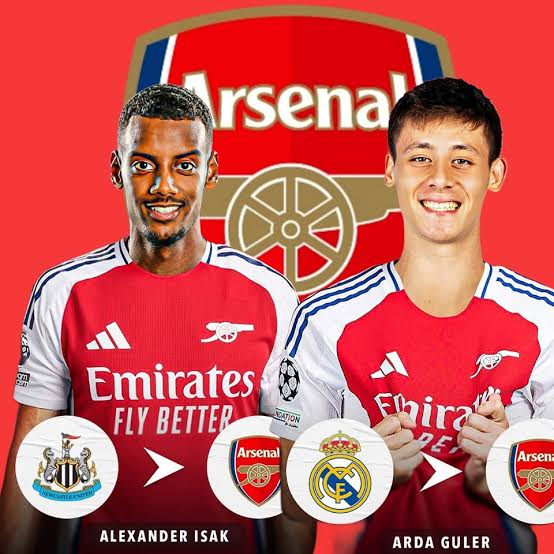
Arsenal’s pursuit of a new striker has emerged as the defining narrative of their transfer strategy, reflecting both ambition and tactical necessity. The North London club’s interest in securing a marquee forward signing represents more than just squad strengthening; it signals their intent to bridge the gap between genuine title contention and perennial top-four finishes.
Benjamin Sesko of RB Leipzig has established himself as one of Europe’s most coveted young strikers, and Arsenal’s sustained interest in the Slovenian international speaks volumes about their long-term vision. At just 21 years old, Sesko possesses the rare combination of physicality, technical ability, and clinical finishing that modern football demands. Standing at 6’4″, he offers the kind of aerial presence that Arsenal have occasionally lacked, while his pace and movement in behind defensive lines provide the direct threat that can unlock stubborn defensive setups.
The Leipzig striker’s development trajectory has been remarkable, transitioning from promising talent to established performer in one of Europe’s most competitive leagues. His ability to lead the line while also dropping deep to link play makes him an ideal fit for Arsenal’s fluid attacking system under Mikel Arteta. The Spanish manager’s preference for versatile forwards who can contribute to build-up play while maintaining goal-scoring threat aligns perfectly with Sesko’s skill set.
However, securing Sesko’s services presents significant challenges. RB Leipzig’s track record of developing and subsequently selling young talent for substantial fees means any potential deal would require considerable financial investment. The German club’s position as a Champions League regular also provides them with negotiating strength, as they can offer Sesko continued exposure to elite European competition.
Viktor Gyokeres represents an alternative profile but equally compelling option for Arsenal’s striker search. The Swedish international’s explosive emergence at Sporting CP has captured attention across Europe, with his goal-scoring record in Portugal’s Primeira Liga serving as compelling evidence of his readiness for a Premier League return. Having previously struggled to make his mark during spells at Brighton and Coventry City, Gyokeres’ transformation in Lisbon demonstrates the value of finding the right environment for player development.
The 26-year-old’s physicality and direct running style would bring a different dimension to Arsenal’s attack. His ability to press from the front and contribute defensively aligns with modern football’s demands for forwards who contribute beyond goal-scoring. Gyokeres’ experience in English football, albeit at a different level previously, could facilitate a smoother transition back to the Premier League compared to players arriving from other European leagues.
Sporting CP’s recent success under Ruben Amorim has elevated the profile of their key players, with Gyokeres central to their tactical approach. Any potential departure would need to align with Sporting’s own transfer plans and valuation expectations. The Portuguese club’s history of developing and selling talent suggests they would be open to negotiations, provided their asking price is met.
The striker market’s complexity extends beyond individual player preferences to broader strategic considerations. Arsenal must balance immediate impact with long-term value, considering factors such as age, contract length, and potential resale value. Both Sesko and Gyokeres offer different risk-reward profiles, with the former representing higher ceiling potential but greater financial investment, while the latter might provide more immediate Premier League adaptation.
Arsenal’s reported interest in Crystal Palace’s Eberechi Eze represents a fascinating development that speaks to their ambition to enhance creativity across multiple attacking positions. The England international has established himself as one of the Premier League’s most exciting attacking talents, combining technical brilliance with consistent end product in a way that makes him attractive to clubs with European aspirations.
Eze’s emergence as a genuine difference-maker at Crystal Palace reflects both his individual development and the tactical framework that has allowed his talents to flourish. His ability to operate across multiple positions in the attacking third provides the versatility that modern football increasingly demands. Whether deployed as a traditional winger, an attacking midfielder, or even in a more central creative role, Eze has demonstrated the adaptability that would make him a valuable addition to Arsenal’s tactical setup.
The 26-year-old’s statistical output provides compelling evidence of his impact. His combination of goals, assists, and chance creation places him among the Premier League’s most productive attacking players outside the traditional “Big Six” clubs. More importantly, his ability to influence games through individual moments of brilliance offers the kind of match-winning potential that can prove decisive in tight contests.
Arsenal’s interest in Eze also reflects broader strategic thinking about squad balance and tactical flexibility. The addition of a player capable of operating in multiple attacking roles would provide Mikel Arteta with greater options for rotation and tactical variation. In a season where fixture congestion and player fitness management become crucial factors, having creative players who can contribute across different positions becomes invaluable.
The financial implications of pursuing Eze cannot be overlooked. Crystal Palace’s position as a well-established Premier League club with no immediate pressure to sell means any potential deal would require significant investment. The Eagles’ recent contract negotiations with their star player demonstrate their commitment to retaining his services, setting up potential for protracted negotiations should Arsenal formalize their interest.
Eze’s relationship with Crystal Palace adds another layer of complexity to any potential transfer. His development at Selhurst Park and connection with the fanbase create emotional considerations beyond pure financial calculations. However, the lure of Champions League football and title contention could prove decisive factors in any eventual decision-making process.
The strategic logic behind pursuing Eze extends to Arsenal’s long-term squad planning. With several attacking players entering different phases of their careers, adding a player approaching his prime years provides both immediate impact and sustained contribution. Eze’s age profile aligns with Arsenal’s broader recruitment strategy of targeting players who can contribute across multiple seasons rather than short-term fixes.
Arsenal’s transfer strategy cannot be viewed solely through the lens of incoming additions; potential departures play equally crucial roles in shaping squad dynamics and financial planning. Gabriel Martinelli’s reported links with Bayern Munich represent the kind of high-profile interest that reflects both his individual quality and the challenges facing Arsenal in retaining their most promising talents.
Martinelli’s journey at Arsenal has been one of remarkable development, from promising young talent to established first-team contributor. His pace, directness, and goal-scoring ability have made him a key component of Arsenal’s attacking setup, while his work rate and pressing intensity align perfectly with Mikel Arteta’s tactical demands. However, the interest from Bayern Munich speaks to the global recognition of his talents and the perpetual challenge facing clubs like Arsenal in competing with Europe’s absolute elite.
The Brazilian’s potential departure would create significant tactical and strategic implications for Arsenal. His unique combination of pace and finishing ability has provided crucial balance to their attacking setup, while his understanding of Arteta’s tactical system makes him difficult to replace directly. Any potential exit would necessitate careful consideration of both immediate replacement options and longer-term strategic planning.
Bayern Munich’s interest reflects their own strategic priorities and the attractiveness of their proposition to ambitious young players. The German giants’ track record of developing attacking talents and their consistent Champions League participation provide compelling arguments for players considering their next career moves. For Martinelli, the opportunity to compete at the highest level while working under world-class coaching could prove attractive despite his apparent happiness at Arsenal.
The financial considerations surrounding any potential Martinelli departure extend beyond immediate transfer fees to broader squad planning implications. Arsenal would need to balance any incoming transfer fee against the cost and complexity of finding suitable replacement options. The current market for established Premier League wingers with proven goal-scoring records commands premium prices, potentially making retention the more economically sensible option.
Leandro Trossard’s reported links with Saudi Arabian clubs represent a different category of potential departure, reflecting the growing influence of the Saudi Pro League in global transfer markets. The Belgian’s experience and versatility have made him a valuable squad player at Arsenal, capable of contributing across multiple attacking positions while providing tactical flexibility for different game situations.
Trossard’s potential departure would have less dramatic tactical implications than Martinelli’s possible exit, but would still require careful consideration. His ability to provide cover across multiple positions has been particularly valuable during injury periods and fixture congestion, while his experience and professionalism have contributed to squad harmony and competition for places.
The financial proposition offered by Saudi Arabian clubs often exceeds what Premier League clubs can match in terms of individual player compensation, creating situations where players must weigh sporting ambition against financial opportunity. For Trossard, who has achieved significant success at international level and experienced Champions League football, the Saudi option might represent an attractive opportunity to maximize earnings while continuing his playing career.
Arsenal’s transfer strategy reflects broader shifts in football’s economic landscape and competitive dynamics. The club’s approach to the current window demonstrates learned lessons from previous transfer experiences, with greater emphasis on strategic planning and long-term value creation rather than reactive spending.
The pursuit of established Premier League talents like Eze alongside continental options such as Sesko and Gyokeres demonstrates sophisticated market analysis. Arsenal’s recruitment team appears to have identified the benefits of both approaches: Premier League-proven players offer reduced adaptation risk but command premium prices, while continental talents might provide better value but carry integration challenges.
Market timing has become increasingly crucial in modern transfer strategy, with clubs needing to balance optimal player acquisition with budget management across multiple seasons. Arsenal’s apparent willingness to invest significantly in striker options reflects recognition that certain positions justify premium investment due to their impact on overall team performance.
The competitive landscape for elite attacking talents has intensified dramatically, with traditional powerhouses joined by newer financial forces in pursuing the same limited pool of world-class options. Arsenal’s ability to compete in this market depends not only on financial resources but also on their sporting project’s attractiveness and the development opportunities they can offer to ambitious players.
Regulatory considerations, including Financial Fair Play requirements and sustainability regulations, add additional complexity to transfer planning. Arsenal must balance immediate competitive needs against long-term financial health, ensuring that any significant investments contribute to sustainable success rather than short-term gains that could compromise future flexibility.
The interconnected nature of modern transfer markets means that individual deals often trigger chain reactions across multiple clubs and leagues. Arsenal’s pursuit of their preferred targets could influence pricing and availability across the entire striker market, while their own players’ potential departures create opportunities for other clubs to strengthen their squads.
Arsenal’s current transfer strategy represents an evolution in their approach to squad building, reflecting lessons learned from previous experiences and adaptation to modern football’s demands. The focus on securing a world-class striker while exploring creative reinforcements demonstrates clear tactical priorities, while the management of potential departures shows sophisticated understanding of squad dynamics.
The success of these transfer efforts will ultimately be measured not just by individual player performances but by their contribution to Arsenal’s broader competitive objectives. The club’s investment in attacking reinforcements signals serious intent to challenge for major honors, while their approach to potential departures reflects confidence in their ability to maintain squad quality through strategic recruitment.
As the transfer window progresses, Arsenal’s ability to execute their strategic vision will depend on numerous factors beyond their direct control, including player preferences, competing club interests, and market dynamics. However, their clear identification of priorities and systematic approach to addressing them provides reason for optimism about their ability to strengthen their squad meaningfully.
The ultimate test of these transfer decisions will come through on-pitch performance and competitive results. Arsenal’s investment in attacking talent reflects recognition that elite football requires elite players, while their strategic approach suggests growing sophistication in their pursuit of sustained excellence at the highest level of the game.








